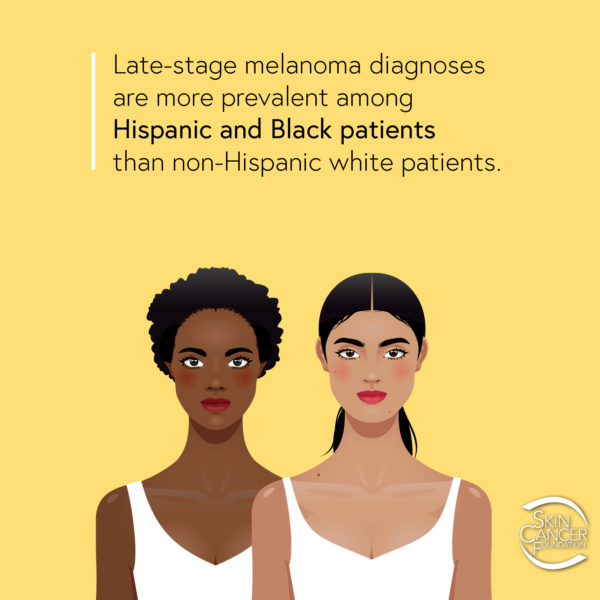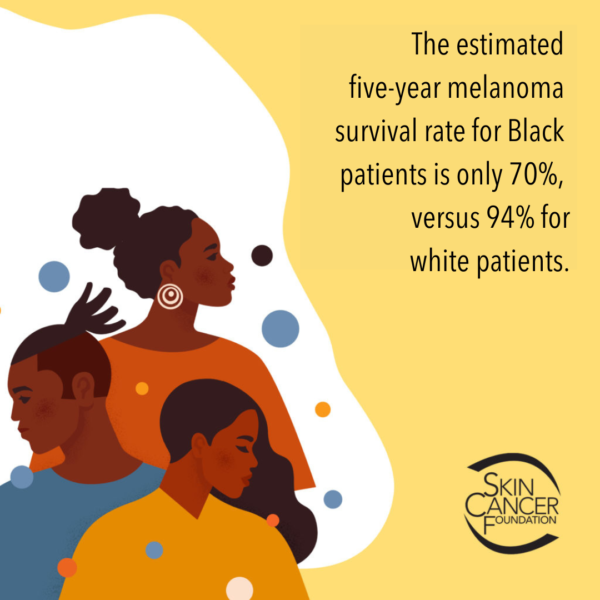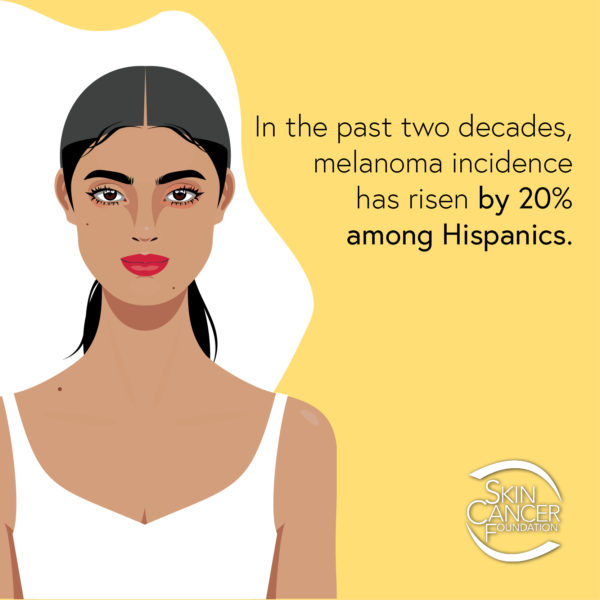What You Need to Know
-Courtesy of the Skin Cancer Foundation
It’s a fact: Skin cancer affects people of all colors. Even if you have a darker skin tone, always tan or rarely burn, you can still develop the disease. What’s more, for people of color, skin cancer is often diagnosed later, when it is harder to treat. This includes people of African, Asian, Latino, Mediterranean, Middle Eastern and Native American descent.
Simply put, if you have skin, you can get skin cancers. These include the non melanoma skin cancers like basal cell carcinoma (BCC), squamous cell carcinoma (SCC) as well as melanoma. Furthermore, ultraviolet (UV) radiation from the sun can cause dangerous, lasting damage to your skin.
What People of Color Can Do
The most important thing to do is get to know your skin type and protect your skin from the sun. Also, check yourself monthly and see a dermatologist once a year for a full body exam. No matter what, if you notice anything NEW, CHANGING or UNUSUAL on your skin, contact a dermatologist.

Skin of Color Stats
- Black patients with melanoma have an estimated five-year melanoma survival rate of 70%, versus 94% for white patients.1
- Skin cancer represents 1 to 2 percent of all cancers in Black people.2
- Skin cancer represents approximately 2 to 4 percent of all cancers in Asian people.2
- Skin cancer represents 4 to 5 percent of all cancers in Hispanic people.3
- Squamous cell carcinoma is the most common skin cancer in Black people.2
- Melanoma in people of color most often occurs on areas that get little sun exposure. Up to 60 to 75 percent of tumors arise on the palms of the hands, soles of the feet under the nail (subungual) and the nail areas. 2
- Black patients are more than three times as likely to be diagnosed with melanoma at a late stage than non-Hispanic white patients. 52% of non-Hispanic Black patients and 26% of Hispanic patients receive an initial diagnosis of advanced-stage melanoma, versus 16% of non-Hispanic white patients.4
- In nonwhites, the plantar portion of the foot is often the most common site of skin cancer, being involved in 30 to 40% of cases.3
- People of color have higher percentages of acral lentiginous melanoma (ALM, melanoma of the palms, soles and nailbeds) than Caucasians. Superficial spreading melanoma is the most frequent subtype in Caucasians and Hispanics.3


- Additional Resources for Sun Safety:
- Sun Safety Information from The Environmental Protection Agency
- The UV index informs our choices for sun protection. Click here to find your current UV level.
Scroll down to view a chart explaining the index levels & the steps we should take to protect our skin. - Additional information from Dartmouth's Dermatology Clinic
- The National Council Skin Cancer Prevention website
- Skin Smart Campus Website
References
- Cancer Facts and Figures 2023. American Cancer Society. https://www.cancer.org/content/dam/cancer-org/research/cancer-facts-and-statistics/annual-cancer-facts-and-figures/2023/2023-cancer-facts-and-figures.pdf Accessed January 16, 2023.
- Gloster HM, Neal K. Skin cancer in skin of color. J Am Acad Dermatol 2006; 55:741-60.
- Bradford, Porcia T. Skin Cancer in Skin of Color. Dermatol Nurs 2009 Jul-Aug; 21(4): 170-178.
- Hu S, Soza-Vento RM, Parker DF, et al. Comparison of stage at diagnosis of melanoma among Hispanic, black, and white patients in Miami-Dade County, Florida. Arch Dermatol 2006; 142(6):704-8.